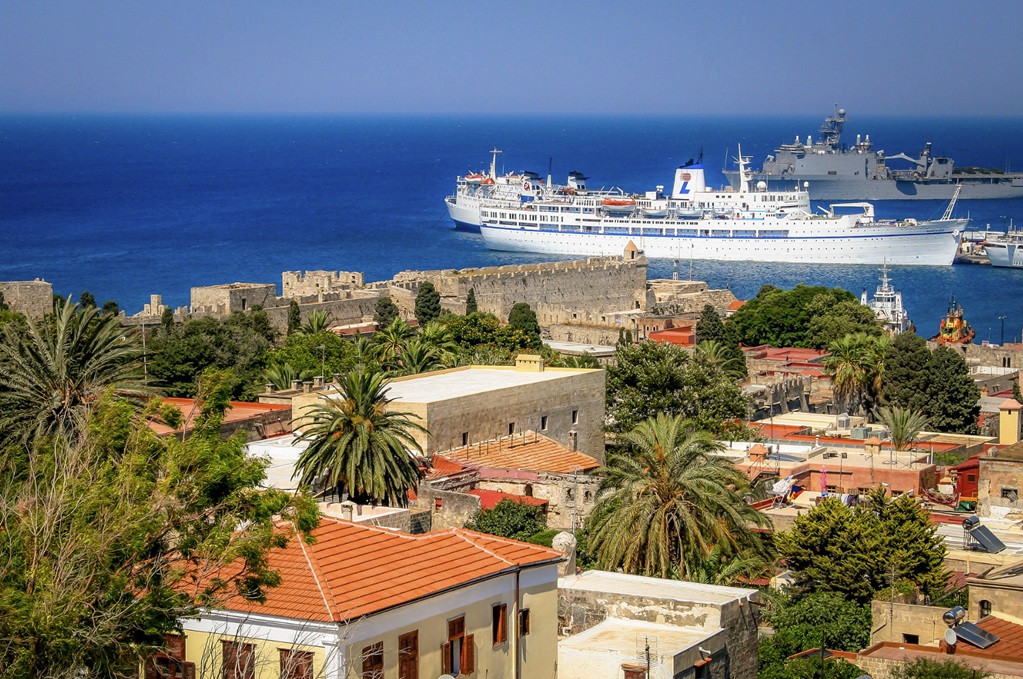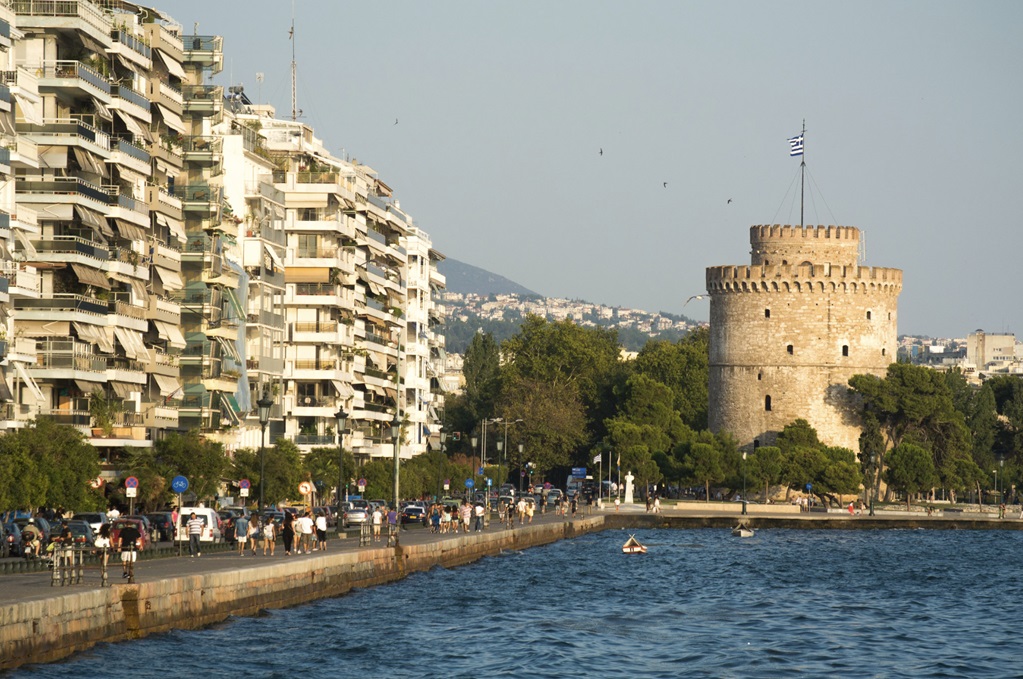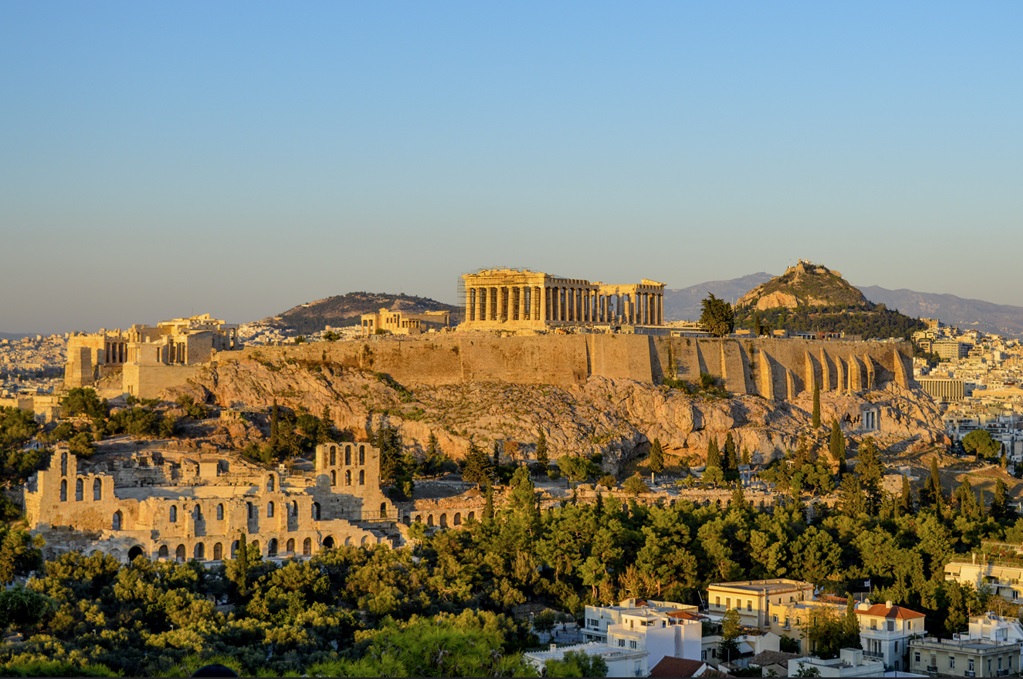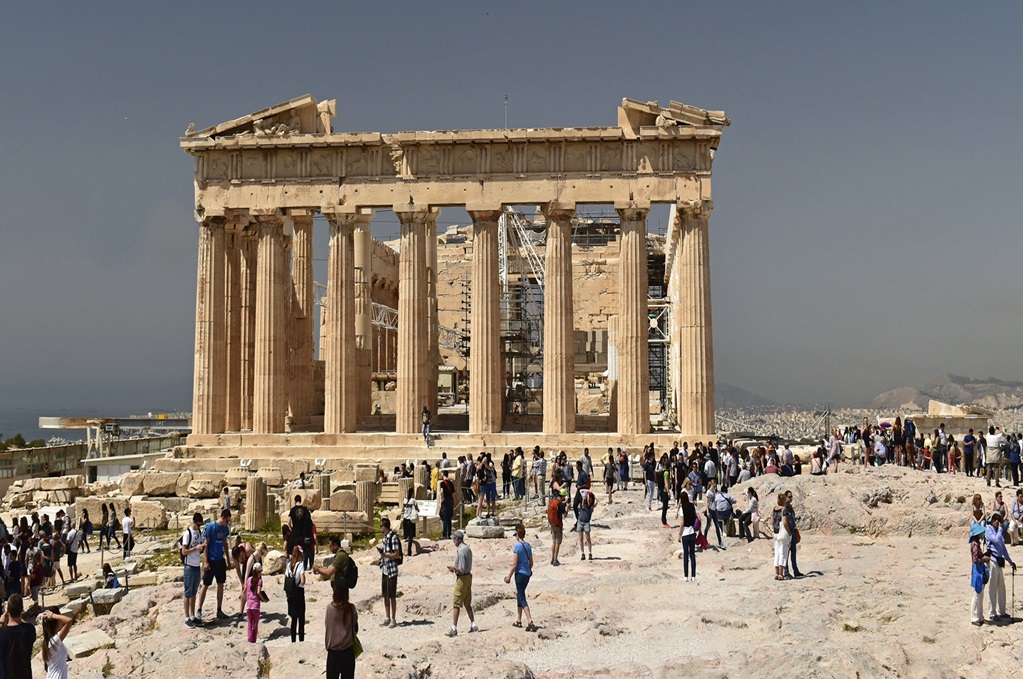Oia: The Northern Star
Ktimatoemporiki Real Estate - 2020-11-11
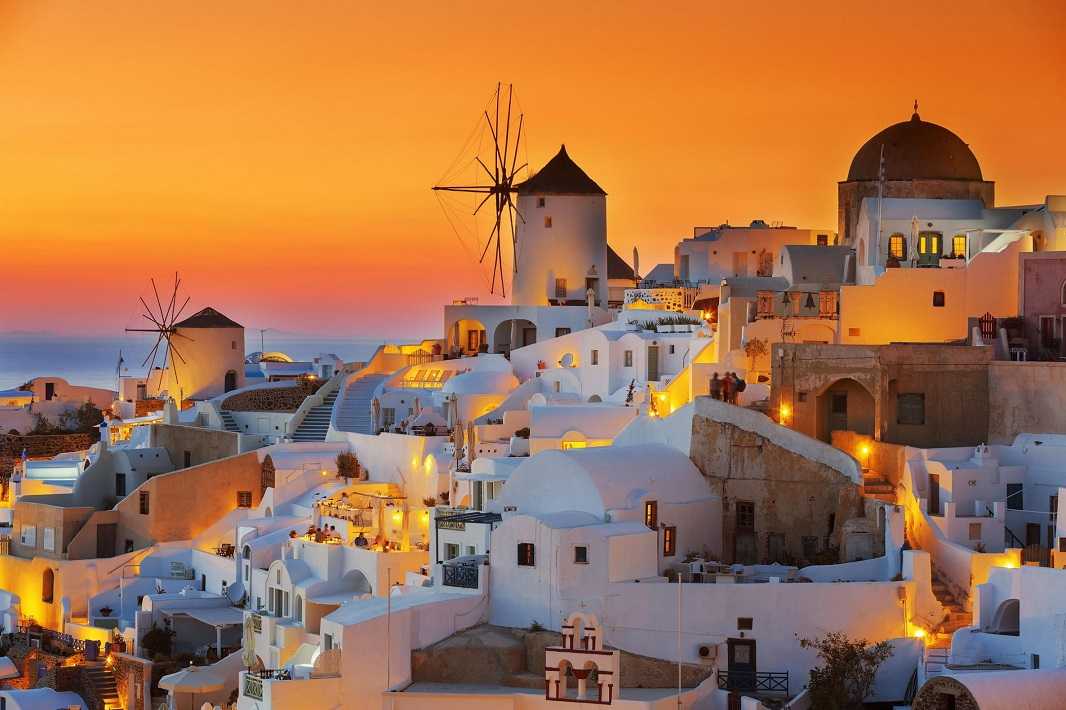
Once a stronghold of the island’s shipowners and sea captains, the glittering village of Oia is Santorini’s headline act.
Oia is the epitome of picture-perfect Santorini. In part a traditional settlement with a long history and unique architecture, in part an ultra-glamorous vacation destination, it hangs suspended above the Aegean, looking down on Ammoudi Harbor and out over the rest of Santorini and the islands of Therasia and Palia and Nea Kameni in the distance.
In the Doric dialect, the word “Oia” meant “far,” so when the government in the interwar period sought to bestow a new, more elegant name on the place, it chose Oia, because the village was so far from all the other settlements. Up until the 19th century, the village was a prolific shipbuilding center known as Apano (or Pano) Meria, which translates simply as “the upper side.” Its inhabitants were called Oiates or Panomerites; the men were mostly sailors or shipowners, and the boatyard in Armeni built large caiques. Every shipowner was also the captain of his craft, which was typically crewed by family members. They loaded their vessels at Ammoudi Harbor with barrels of Vinsanto, a wine made with sundried grapes from the local vineyards and matured in Finikia, in wine cellars known as “Canaves.” This cargo was often destined for the Black Sea, or for the Orthodox communities of Russia, who used Vinsanto wine for Holy Communion.

Saved by an earthquake
Until the 1950s, this small part of the world had no electricity, no paved roads, and, of course, no guesthouses or tavernas. It’s hard to imagine today, as you watch hordes of visitors jostling each other and wedding photographers struggling through the crowds to set up the best shots, but Oia back then was a sparsely settled village, and its narrow ways were graced not by tourists but by the horses, donkeys, and mules used to transport goods.
All this changed on July 9, 1956, the day of the catastrophic earthquake that flattened the whole village and many other parts of the island. The houses in Oia, which were made of stone and mud, collapsed. The inhabitants scattered in whichever direction they had a family. Many would never return.

The center of Oia, the area left and right of the marble-paved street, along with the public squares and churches, was rebuilt within about ten years, along with new homes for the earthquake survivors. Building materials and army personnel were sent from Piraeus for the reconstruction effort. In order to get everything to Oia from the main harbor of Kamari, a road was built. It was, at first, just a dirt track. The new houses were constructed using concrete, with strong foundations and distinctive, barrel-shaped roofs. These “barrels” can still be found along the main road, atop single-story structures now nestled in between luxury dwellings. Around the same time electricity arrived and a regular boat service began. In 1976, an airfield was built. Initially intended for military use, it soon started servicing commercial flights and tourism took off. That’s why on Santorini, they say “O sismos, sosmos,” which means “The earthquake was our salvation.”

THEN AND NOW
What you might not know about the caldera area, so glamorous today, is that in older times it was inhabited by the poorest islanders, who lived in single-story homes built from aspa, a mixture of volcanic ash, pumice stone and pieces of solidified lava and sand. The “good” neighborhood was the inland side of the village, or Sideras, where the grand, two-story captains’ houses were located, with their distinctive architectural features and a characteristic transom window above the entrance. Many still survive, either as houses or as restaurants.

Today, the traditional village of Oia is almost as famous as the island of Santorini itself. The castle, whose ruins welcome crowds of visitors every evening, offers a spectacular sunset. There are a number of world-famous luxury hotels and holiday accommodations with contemporary spa facilities, infinity pools and personal Jacuzzis (they come with amazing views, too), as well as dozens of dining options for every budget. There is a hair salon, a post office, an elementary and secondary school, a health center and one of the most famous bookshops in the world, Atlantis, housed in an yposkafo, a building carved right into the rock. The Maritime Museum preserves the history of the village and, with it, much of its character. There is, however, no turning back the clock; while Oia has a permanent population of only 1,000, with over 8,000 visitors a day from cruise ships alone, it becomes, for a few hours at a time, an extremely lively place.

Arts and crafts
Walk along the central, marble-paved road which runs from the luxurious Canaves Oia Hotel to the castle, a distance of about one kilometer. On the left-hand side, small wooden gates open onto paths leading down to the hotels and restaurants that perch on the edge of the caldera.
This main road is a shopper’s paradise. Boutiques here feature both Greek and international designers: Soho-Soho for the most famous global brands and fashion houses; design garments and accessories at Andronis Boutiques; and silk, cashmere and wool accessories at the Silk Shop. In smaller shops, look for handmade Greek creations by young designers such as Ioanna Kourbela.

Stunning jewelry by Greek designers shine in the display cases of boutiques such as Poniros. Check out the classic gold designs by Alexandros, or discover jewelry, ornaments, paintings and other vintage items in Oia’s only antique shop, which resembles a small, open-air bazaar.
Oia is the epitome of picture-perfect Santorini. In part a traditional settlement with a long history and unique architecture, in part an ultra-glamorous vacation destination, it hangs suspended above the Aegean, looking down on Ammoudi Harbor and out over the rest of Santorini and the islands of Therasia and Palia and Nea Kameni in the distance.
In the Doric dialect, the word “Oia” meant “far,” so when the government in the interwar period sought to bestow a new, more elegant name on the place, it chose Oia, because the village was so far from all the other settlements. Up until the 19th century, the village was a prolific shipbuilding center known as Apano (or Pano) Meria, which translates simply as “the upper side.” Its inhabitants were called Oiates or Panomerites; the men were mostly sailors or shipowners, and the boatyard in Armeni built large caiques. Every shipowner was also the captain of his craft, which was typically crewed by family members. They loaded their vessels at Ammoudi Harbor with barrels of Vinsanto, a wine made with sundried grapes from the local vineyards and matured in Finikia, in wine cellars known as “Canaves.” This cargo was often destined for the Black Sea, or for the Orthodox communities of Russia, who used Vinsanto wine for Holy Communion.

Saved by an earthquake
Until the 1950s, this small part of the world had no electricity, no paved roads, and, of course, no guesthouses or tavernas. It’s hard to imagine today, as you watch hordes of visitors jostling each other and wedding photographers struggling through the crowds to set up the best shots, but Oia back then was a sparsely settled village, and its narrow ways were graced not by tourists but by the horses, donkeys, and mules used to transport goods.
All this changed on July 9, 1956, the day of the catastrophic earthquake that flattened the whole village and many other parts of the island. The houses in Oia, which were made of stone and mud, collapsed. The inhabitants scattered in whichever direction they had a family. Many would never return.

The center of Oia, the area left and right of the marble-paved street, along with the public squares and churches, was rebuilt within about ten years, along with new homes for the earthquake survivors. Building materials and army personnel were sent from Piraeus for the reconstruction effort. In order to get everything to Oia from the main harbor of Kamari, a road was built. It was, at first, just a dirt track. The new houses were constructed using concrete, with strong foundations and distinctive, barrel-shaped roofs. These “barrels” can still be found along the main road, atop single-story structures now nestled in between luxury dwellings. Around the same time electricity arrived and a regular boat service began. In 1976, an airfield was built. Initially intended for military use, it soon started servicing commercial flights and tourism took off. That’s why on Santorini, they say “O sismos, sosmos,” which means “The earthquake was our salvation.”

THEN AND NOW
What you might not know about the caldera area, so glamorous today, is that in older times it was inhabited by the poorest islanders, who lived in single-story homes built from aspa, a mixture of volcanic ash, pumice stone and pieces of solidified lava and sand. The “good” neighborhood was the inland side of the village, or Sideras, where the grand, two-story captains’ houses were located, with their distinctive architectural features and a characteristic transom window above the entrance. Many still survive, either as houses or as restaurants.

Today, the traditional village of Oia is almost as famous as the island of Santorini itself. The castle, whose ruins welcome crowds of visitors every evening, offers a spectacular sunset. There are a number of world-famous luxury hotels and holiday accommodations with contemporary spa facilities, infinity pools and personal Jacuzzis (they come with amazing views, too), as well as dozens of dining options for every budget. There is a hair salon, a post office, an elementary and secondary school, a health center and one of the most famous bookshops in the world, Atlantis, housed in an yposkafo, a building carved right into the rock. The Maritime Museum preserves the history of the village and, with it, much of its character. There is, however, no turning back the clock; while Oia has a permanent population of only 1,000, with over 8,000 visitors a day from cruise ships alone, it becomes, for a few hours at a time, an extremely lively place.

Arts and crafts
Walk along the central, marble-paved road which runs from the luxurious Canaves Oia Hotel to the castle, a distance of about one kilometer. On the left-hand side, small wooden gates open onto paths leading down to the hotels and restaurants that perch on the edge of the caldera.
This main road is a shopper’s paradise. Boutiques here feature both Greek and international designers: Soho-Soho for the most famous global brands and fashion houses; design garments and accessories at Andronis Boutiques; and silk, cashmere and wool accessories at the Silk Shop. In smaller shops, look for handmade Greek creations by young designers such as Ioanna Kourbela.

Stunning jewelry by Greek designers shine in the display cases of boutiques such as Poniros. Check out the classic gold designs by Alexandros, or discover jewelry, ornaments, paintings and other vintage items in Oia’s only antique shop, which resembles a small, open-air bazaar.
Source: https://www.greece-is.com/

